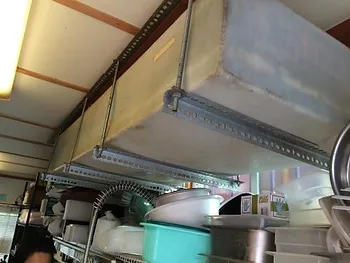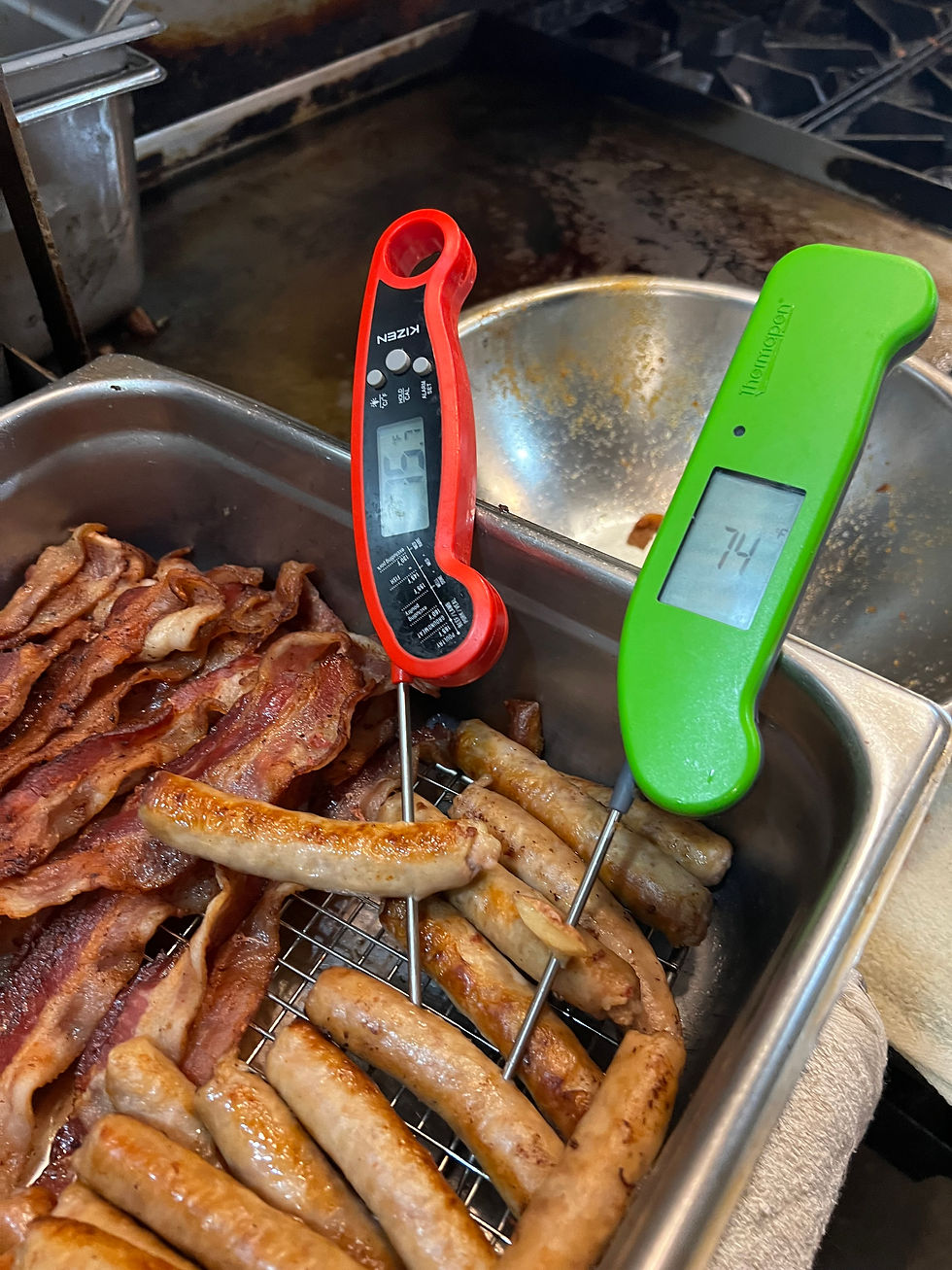Mobile Food Unit Tank Cleaning Required
- mcfoodsafety
- Feb 1, 2024
- 2 min read
Updated: Feb 15, 2024
It is important to clean your mobile food unit's fresh water tanks often so you know that the water you are using is safe. Water tanks can grow bacteria over time that can make customers sick.
This is a fresh water tank below that has a buildup of microorganismal build-up or a possibility of contamination.
The rule requires fresh and waste water tanks must be cleaned at least every six (6) months or more frequently if the tank manufacturer’s directions recommend.
Below: This is a very dirty fresh water tank. You can see the black oraganic build-up inside the tank.
To clean the tanks, you'll need to fill your freshwater tank completely and empty it twice: once with chlorinated water and once with clear water for rinsing.
For the chlorinated water, you'll be using a solution called sodium hypochlorite, which contains 5-8% chlorine (or bleach). You must use unscented bleach, with no additives. The chlorinated water will need to sit in your tanks for several hours, so you will want to do this when you are closed for business.
The American Water Works Association recommends following these steps to clean your fresh water tanks:
1. Calculate the capacity of your water tank and how much bleach you will need for a 50ppm chlorine solution. A chlorine concentration calculator can be found at: www.omnicalculator.com/chemistry/ bleach-dilution
2. Pour the correct amount of bleach carefully into your freshwater tank inlet. Then add water to fill the tank and use your test strip to make sure you have a 50 ppm chlorine (bleach) solution.
3. Turn on all faucets (hot and cold) until you smell bleach and can see 50ppm chlorinated water coming out of the tap when using your test strips. 50ppm is a light blue/purple color on the white strip.
4. Close faucets and let water stand in the tank for six (6) hours.
5. Do not drink this water or use it for anything in your mobile food unit!
6. After six (6) hours, drain the freshwater tank into the waste-water tank and wait 30 minutes. 7. While you wait, refill the freshwater tank using a food-grade hose. Then run the water through to your wastewater tank one more time or until the bleach odor has decreased and you are no longer seeing blue color on your test strip.
8. It is not harmful if you still have a light bleach odor and taste, as long as you used the correct amount of chlorine solution
You will want to keep a log of when your tanks have been cleaned.
Regular maintenance and proper cleaning will make sure you are always providing safe water to your customers.
To view the Oregon Health Authority Fact Sheet #33, Mobile Food Unit Tank Cleaning, click on the highlighted text.






Comments